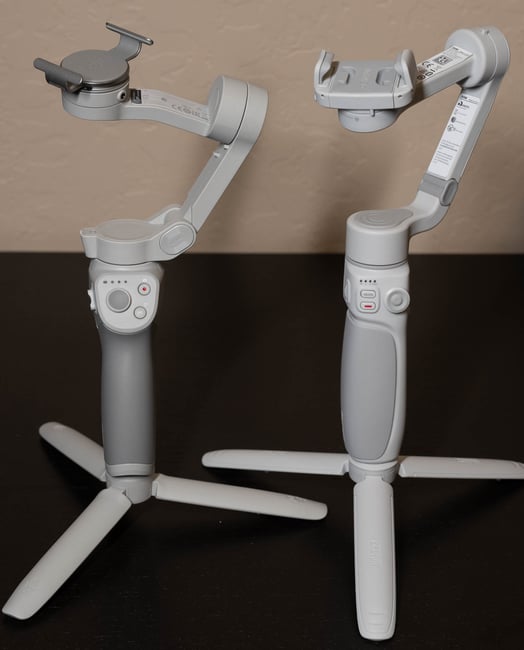أفضل أدوات تثبيت الفيديو المتوفرة اليوم: 8 تم اختبارها
The Best Video Gimbals Available Today: 8 Tested
بفضل المجموعة المتنوعة من أدوات تثبيت الكاميرا المتوفرة في السوق، أصبح من السهل نسبيًا في الوقت الحاضر تصوير لقطات فيديو ثابتة ذات مظهر احترافي. تقدم الشركات المصنعة الكبرى مثل DJI وZhiyun مجموعة متنوعة من خطوط المحور، وهناك مجموعة كاملة من المنتجات ضمن هذه الخطوط. لقد قمت باختبار العديد من أفضل أدوات التثبيت لمتطلبات مختلفة وقمت بكتابة هذا الدليل لمساعدتك في الاختيار من بينها.
سواء كنت تحاول معرفة الفرق بين Ronin SC وRSC 2، أو تبحث فقط عن الخيار الأفضل لتثبيت لقطات هاتفك الذكي، آمل أن يلقي هذا الدليل بعض الضوء على الإجابة. أدناه، سأتناول ثلاث فئات من المحاور: محاور الهواتف الذكية، ومحور الكاميرا المدمجة/عديمة المرآة، ومحور المحور الأكبر حجمًا الذي يدعم تقنية DSLR.
Thanks to the wide variety of camera-stabilizing gimbals on the market, it’s relatively easy nowadays to shoot steady, professional-looking video footage. Major manufacturers like DJI and Zhiyun offer a variety of gimbal lines, and there’s a whole mess of products within those lines. I’ve tested several of the best gimbals for different requirements and written this guide to help you choose between them.
Whether you’re trying to figure out the difference between the Ronin SC and RSC 2, or are just looking for the best option for stabilizing your smartphone footage, I hope this guide can shed some light on the answer. Below, I’ll go through three categories of gimbal: smartphone gimbals, compact/mirrorless camera gimbals, and larger DSLR-capable gimbals.
The Best Video Gimbals Available Today: 8 Tested
بفضل المجموعة المتنوعة من أدوات تثبيت الكاميرا المتوفرة في السوق، أصبح من السهل نسبيًا في الوقت الحاضر تصوير لقطات فيديو ثابتة ذات مظهر احترافي. تقدم الشركات المصنعة الكبرى مثل DJI وZhiyun مجموعة متنوعة من خطوط المحور، وهناك مجموعة كاملة من المنتجات ضمن هذه الخطوط. لقد قمت باختبار العديد من أفضل أدوات التثبيت لمتطلبات مختلفة وقمت بكتابة هذا الدليل لمساعدتك في الاختيار من بينها.
سواء كنت تحاول معرفة الفرق بين Ronin SC وRSC 2، أو تبحث فقط عن الخيار الأفضل لتثبيت لقطات هاتفك الذكي، آمل أن يلقي هذا الدليل بعض الضوء على الإجابة. أدناه، سأتناول ثلاث فئات من المحاور: محاور الهواتف الذكية، ومحور الكاميرا المدمجة/عديمة المرآة، ومحور المحور الأكبر حجمًا الذي يدعم تقنية DSLR.
Thanks to the wide variety of camera-stabilizing gimbals on the market, it’s relatively easy nowadays to shoot steady, professional-looking video footage. Major manufacturers like DJI and Zhiyun offer a variety of gimbal lines, and there’s a whole mess of products within those lines. I’ve tested several of the best gimbals for different requirements and written this guide to help you choose between them.
Whether you’re trying to figure out the difference between the Ronin SC and RSC 2, or are just looking for the best option for stabilizing your smartphone footage, I hope this guide can shed some light on the answer. Below, I’ll go through three categories of gimbal: smartphone gimbals, compact/mirrorless camera gimbals, and larger DSLR-capable gimbals.









تعليق